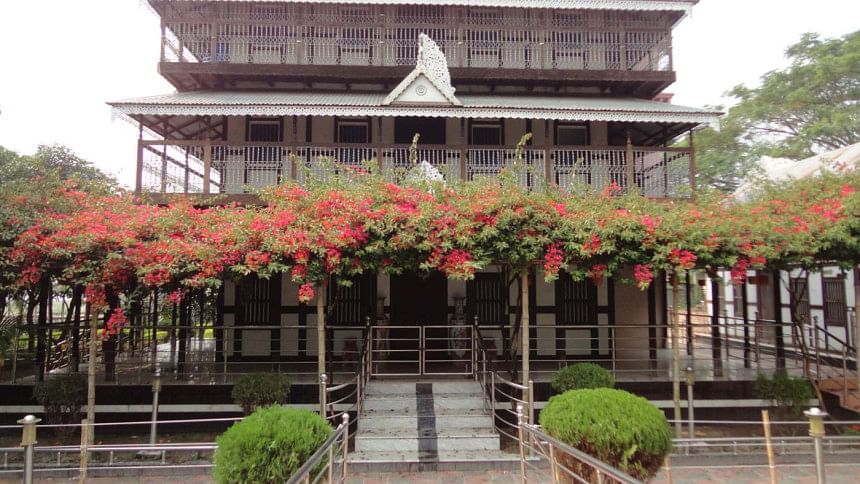The heritage of Munshiganj

In Munshiganj is a longstanding tradition of constructing houses uniquely of tin and wood. Such houses which are to be found across the district but are in especially high concentration in Louhojang are most often decorated with intricate designs. In constructing such houses, the carpenter takes on the role of artist.
The history of tin-and-wood houses may well be lost to time, though locals have various ideas about how the signature architecture style came about. Some say that during the British period there was a scarcity of bricks and iron which encouraged the use of tin and wood in building homes. Others believe the construction materials were favoured due to the prevalence of river erosion, with tin and wood homes more easily moved out of harm's way.
While these days cheaper concrete construction is favoured by many householders, the wood and tin tradition of Munshiganj retains nostalgic popularity. "I lived in Japan for 16 years," says Mizanur Rahman Jhilu from Kanokshar area. "When I returned I decided to build my two-storey home of tin and wood rather than concrete, to honour our local traditions."
These days however, Mizanur is concerned he may not be able to protect his home from Padma River erosion, which in the past several years has been severe, especially last year in Garia village of Kumarbhog union. "I think the river should be widened at Mawa Point to protect our area from being lost to the river," Mizanur says.
"After last year we are particularly worried about erosion in coming years," says Gopal Master, an inhabitant of Garia. "As the government is busy constructing the Padma Bridge it will be helpful for our village if the river's course is simultaneously widened and well-managed," he says.
According to the local Member of Parliament Prof. Sagufta Yasmin Emily, there have been government discussions about the issue. Sources say a 13-kilometre stretch from Zajira Point is earmarked for anti-erosion works, but only 2-kilometres from Mawa Point.
While these works were supposed to have been completed by December 2016 only 15% of the project has thus far been achieved. In the meantime many of the unique tin and wood houses of Munshiganj remain at risk.

 For all latest news, follow The Daily Star's Google News channel.
For all latest news, follow The Daily Star's Google News channel. 



Comments